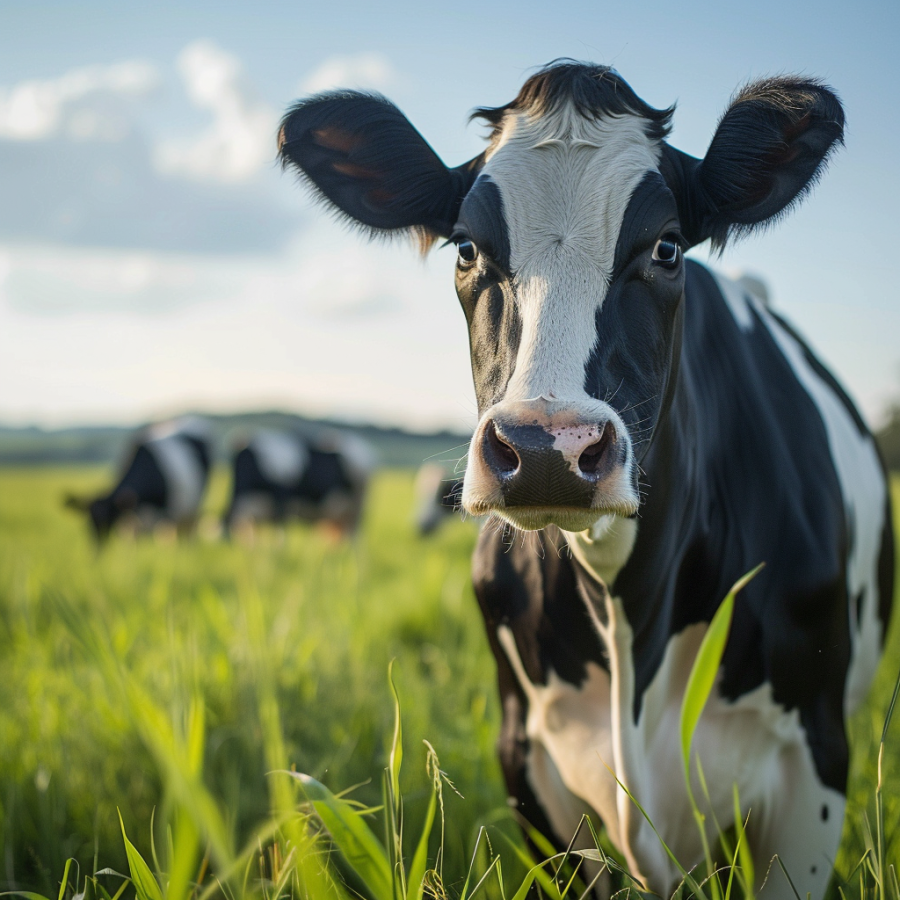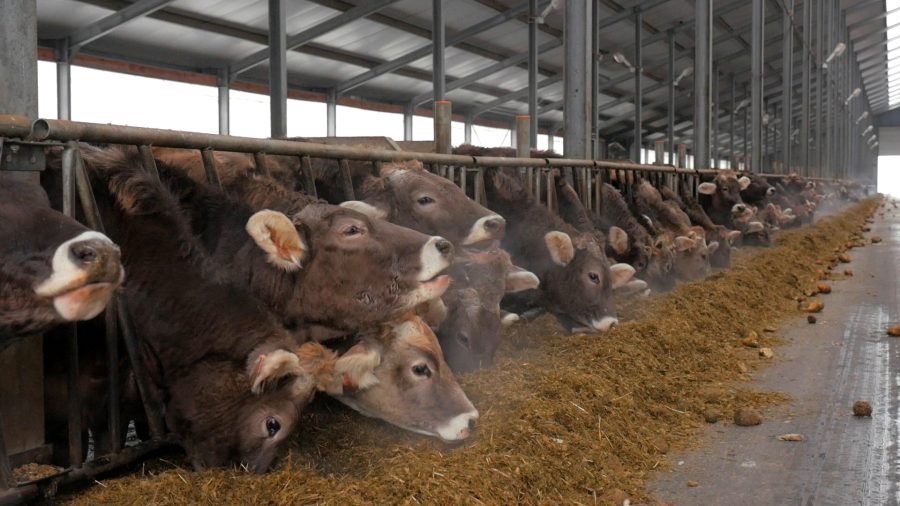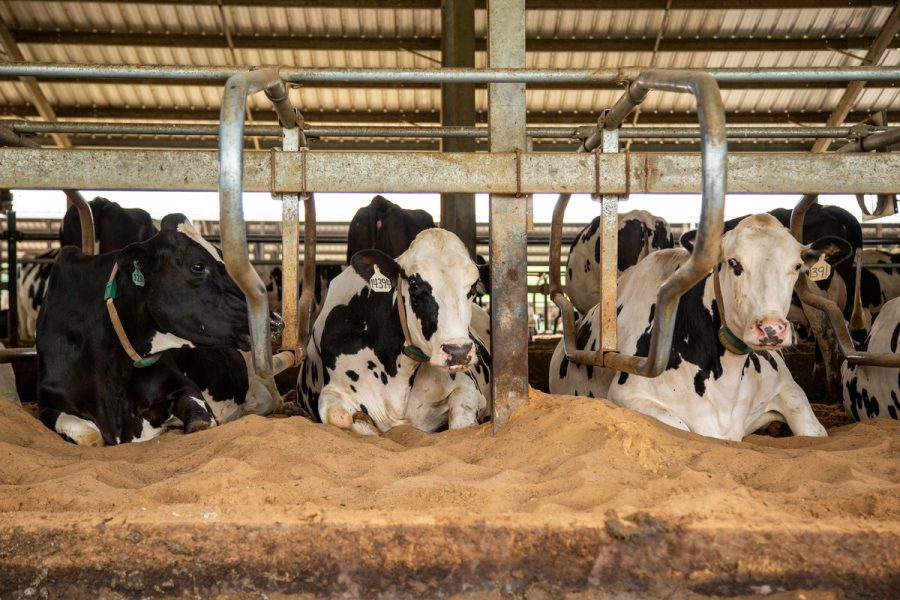Uncover Mr. Mogul Delta’s groundbreaking impact on the global dairy industry through his unparalleled genetics and advanced technologies. What was it about this bull that reshaped dairy farming around the world? Continue reading to explore.
Mr. Mogul Delta, a bull whose distinct genetic makeup, a perfect blend of the best traits from his parents, has made a lasting impression on dairy cattle breeding worldwide. Delta’s well-balanced genetics and his pioneering role in advancing sexed semen technology have set new standards for producers. Delta was not just a bull but a creator and pioneer, serving as a flagship bull for years. Let’s explore Delta’s journey to genetic prominence, his role in integrating sexed semen into conventional breeding, and the developments that have sprung from his progeny.
The Perfect Union: Harnessing the Best of Delicious and Mogul
Two icons in the dairy breeding world, Delicious and Mogul, had an extraordinary mating that was not a mere coincidence but a deliberate strategy to produce Delta. Delicious, outstanding, yet lacking in several aspects, combined with Mogul. Famous for his robust health and exceptional type, Mogul countered Delicious’s shortcomings. Delta resulted from the deliberate matching meant to maximize and balance the genetic qualities of both parents. His genetic profile showed a perfect mix of both parents, which gave him competitiveness and balance. Delta thus had a significant influence on the dairy sector when he first entered it.
Robust daughter Miss OCD Delicious VG-87, with roots in Windsor-Manor Zip EX-95, was ahead of her time regarding health and fitness. Among Delicious’s many successful progeny was MS Delicious Nightout VG-85, whose clones provided several sires for AI studs. Notable among her top-classified daughters at Wet Holsteins are MS Delicious Mojo EX-90 and MS Delicious 73358 EX-90, a Mogul daughter. These grandchildren serve as a testament to Delicious’s extraordinary breeding ability, securing her dairy business legacy.
Delta’s father, Mogul, has considerably changed the Holstein breed. Following giants like Round Oak Rag Apple Elevation and Pawnee Farm Arlinda Chief, Mogul ranked sixth on the list of significant foundation sires in the US Holstein breed, earning 9.97% impact. Renowned for fantastic udders, low height, and excellent productivity. Former Select Sires consultant Charlie Will called Mogul “the new Elevation.”
Delta’s Meteoric Rise in the Dairy Industry
Delta’s entry into the dairy sector was nothing short of transformative. He immediately showcased his genetic brilliance by ranking first for net merit and Total Performance Index (TPI). Breeders worldwide hold him in high regard for his unique mix of traits, which he consistently delivered. Delta’s profile combined outstanding type qualities, robust health, and excellent productivity, inspiring a new wave of excellence in the industry.
Delta is a unique bull, embodying well-rounded qualities that set high standards in the dairy industry. He consistently produced yields that met contemporary dairy criteria, making him a reliable option for sustainable farming. His health qualities, including longevity and disease resistance, further solidified his leadership. Delta’s type features, such as solid feet and legs and well-attached udders, enhanced his appeal and motivated others to strive for excellence.
Delta’s Role in Pioneering Gender-Sorted Semen: A Technological Breakthrough
Delta’s introduction as one of the first bulls with gender-sorted semen revolutionized the dairy sector. Gender-sorted semen changed this landscape, significantly increasing the likelihood of female offspring—a significant boon for dairy businesses aiming to maximize milk output and herd control. As we know, this changed the future of dairy farming, leading to worldwide Beef on Dairy programs. These programs, which involve breeding dairy cows with beef bulls to produce calves for the beef market, have significantly increased dairy farmers’ profitability.
Given the industry’s devotion to tradition, this invention faced resistance. However, Delta was the ideal ambassador for this new technique because of his remarkable genetic profile: robust health features, essential production, and storage type attributes. Delta provided the comfort breeders needed to welcome gender-sorted semen.
Delta changed industry attitudes, not just with outstanding statistics. His constant output of viable semen-producing, dependable, high-quality female progeny eliminated questions about the dependability and effectiveness of the method. This increased Delta’s appeal as well as helped to open the path for further acceptance of gender-sorted semen.
Delta was essentially a significant player in demonstrating its worth, not just a recipient of gender-sorted semen. His general popularity and outstanding performance records underlined the valuable advantages of this invention, thereby motivating other studs to use these advanced breeding techniques. Delta’s part in this technical change highlighted his importance as a productive sire and driver of improving dairy industry operations.
Delta’s Resilience: Overcoming EHD and Geographical Limitations
Delta’s journey wasn’t without hurdles. Contracting EHD as a young calf in Quincy, Illinois, restricted his semen distribution in major markets like Europe, Russia, and China, potentially limiting his impact. Still, Delta’s unique DNA helped him to go above these limitations. Crucially, his capacity to generate high-quality semen—even if it was sexed female semen—was vital. Delta’s fertility and genetic qualities maintained demand strong even if just 50% of sexed semen could be marketed as female; this resulted in over 700,000 doses sold. ST Genetics’ approach helped Delta keep a significant foothold in the dairy sector, proving that great genes can overcome considerable challenges and leaving the audience in awe of his resilience.
An Endorsement in Every Corner: Dairy Producers Celebrate Delta’s Progeny
Delta has a fantastic worldwide influence. His legacy echoes many dairy farms from North America to South America, and his qualities have significantly impacted the dairy.
Dairy farmers all across praise Delta’s progeny for consistency and fertility. With over a hundred milking Delta daughters, Glenn Mormann of San-Dan Holsteins says, “The most excellent thing about the Deltas is that they are problem-free. Strong cows with lovely bodies, not too tall, and with excellent legs and feet abound here.
Many dairy producers agree, stressing Delta’s daughters’ consistency and outstanding udders. “Delta’s daughters are reliable and balanced,” one farmer said, “a rare find.”
Beyond appearances, Delta’s children’s fecundity is also well regarded. “Delta’s semen quality is exceptional, so breeding seasons are more predictable and productive,” one producer stated.
Delta’s continuing relevance emphasizes its remarkable dependability and stability even with many base alterations. In the dairy industry, base alterations refer to changes in the genetic evaluation system, which can lead to significant rating changes for bulls. However, Delta has maintained his high standing over several genetic examinations, demonstrating his stability and reliability. This is a lighthouse of confidence for breeders who boldly make genetic investments.
Delta’s broad impact and acceptability on the international scene confirm his reputation as a transforming agent in contemporary dairy breeding. His combination of innovative technologies and constant genetic perfection guarantees his influence will be felt in the sector for years.
Delta’s Genetic Influence Continues to Permeate the Dairy Industry Through Successive Generations
Delta’s genetic impact in the dairy sector will remain substantial over the next generations. His daughters are much sought after in commercial and breeding environments for their outstanding udders, moderate frames, and robust health features. These qualities improve their output and provide an excellent benchmark for future generations.
Delta’s legacy is further strengthened by his sons, who show exceptional type and manufacturing quality—Delta-Lambda, for example. Many stud catalogs highlight Delta-Lambda, which also continues to produce outstanding progeny, thereby increasing Delta’s influence on the breed.
Delta’s great-grandsons and grandsons have his revered traits, which helps to explain their unusual pedigrees. These descendants guarantee Delta’s balance of excellent productivity, health, and type characteristics, therefore assuring his genetic contributions remain relevant in contemporary breeding schemes. The great-granddaughters also show the tremendous constancy and dependability that define Delta’s family.
Delta’s capacity to pass desired features across generations finally emphasizes his enormous impact on dairy cow breeding. His legacy lives via his immediate progeny, which benefits from the genetic basis he created, underscoring the worldwide relevance of his efforts to the dairy business.
Accolades and Achievements
- Ranked among the top charts for TPI and net merit upon debut.
- One of the first bulls to be released with gender-sorted semen, significantly influencing industry practices.
- Consistently produced high-quality semen with high fertility rates, earning exceptional breeder satisfaction.
- He accumulated a TPI of 2692, based on 25,329 milking daughters, making him Mountfield Mogul’s second-highest son.
- Maintained a stable TPI ranking close to his debut score of 2709 gTPI, marking a long and sustained impact in the industry.
- He became the world’s number one proven TPI bull during his career.
- He achieved significant success in multiple countries, contributing to the global dairy industry with high milk production and outstanding physical traits in his progeny.
- Remarkably high total production with over 700,000 doses of sexed semen sold, even in the presence of geographical and health-related restrictions.
- He produced numerous elite daughters, leading to multiple successful sons and grandsons, extending his genetic influence.
- It is recognized for exceptional consistency in transmitting desirable traits such as balanced proportions, moderate frame size, and high-quality udders.
The Bottom Line
It is indisputable that Delta has helped shape the dairy sector. His genetic perfection and innovative utilization of gender-sorted semen have changed contemporary dairy breeding. Delta’s diverse heritage has significantly affected dairy operations, from outstanding TPI rankings to consistently high-performance offspring. Despite geographic and health-related obstacles, Delta’s strong genetic impact endures via his many sons and daughters. Delta’s narrative emphasizes the potential of modern genetics and technologies in the dairy sector. We must keep stretching the envelope of genetic science and technology to guarantee a bright future for dairy producers.
Key Takeaways:
- Delta, born from the union of Delicious and Mogul, emerged as a top-ranking, well-balanced bull, excelling in production, health, and type traits.
- He was among the first bulls introduced with gender-sorted semen, overcoming initial industry skepticism and proving the technology’s efficacy.
- Despite geographical limitations due to an EHD infection, Delta’s semen sales reached impressive numbers, particularly in North and South America.
- Dairy producers worldwide praised Delta’s progeny for their uniformity, robustness, and problem-free characteristics, making him a valuable asset in various breeding programs.
- Delta’s genetic legacy continues through his successful sons and grandsons, notably Delta Lambda, influencing the industry through successive generations.
- Accolades for Delta include ranking as a top TPI bull and maintaining stability in his performance metrics over his career.
- Despite not surpassing the ‘millionaire’ mark in conventional semen units sold, Delta’s overall impact and significance in the AI industry remain unparalleled.
Summary:
Mr. Mogul Delta, a bull with a unique genetic heritage, has significantly impacted dairy cattle breeding worldwide. His well-balanced genetics and pioneering role in advancing sexed semen technology have set new standards for producers. Delta’s daughter, Miss OCD Delicious VG-87, was ahead of her time in health and fitness, and her top-classified daughters at Wet Holsteins are MS Delicious Mojo EX-90 and MS Delicious 73358 EX-90, a Mogul daughter. Delta’s father, Mogul, has significantly changed the Holstein breed, ranking sixth on the list of significant foundation sires in the US Holstein breed. His unique mix of traits, including fantastic udders, low height, and excellent productivity, has made him a highly respected breeder. Delta’s introduction as one of the first bulls with gender-sorted semen revolutionized the dairy sector, increasing the likelihood of female offspring. His remarkable genetic profile, including robust health features, essential production, and storage type attributes, has opened the path for further acceptance of gender-sorted semen. Delta’s daughters are sought after for their outstanding udders, moderate frames, and robust health features, providing an excellent benchmark for future generations.
















